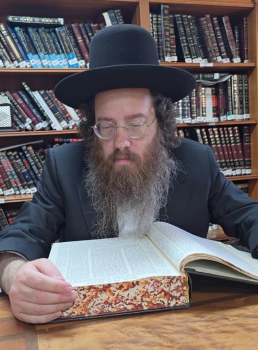Being Barefoot
Article
The halachic authorities write that one should not walk around barefoot,(3) and that being properly dressed includes having shoes on one’s feet. (4) It is especially important not to go around barefoot on Shabbat and Yom Tov. (5) This is because wearing shoes is said to offer a level of comfort and joy that one may not deprive oneself of on Shabbat or Yom Tov.(6) Indeed, the Talmud says that the feet of the Jewish people who went to Jerusalem on the holidays were “beautiful.” It is explained that this means that if they would have traveled to Jerusalem barefoot, they would have been in pain and agony, but shoes offer comfort and joy.(7) We are taught that one should sell everything one owns in order to purchase proper shoes.(8)
There are a number of reasons why one should not go around barefoot. One of the reasons is that going around barefoot is considered to be immodest (9) and undignified.(10) It is also believed that it can lead to illness. (11) So too, one who goes around barefoot will certainly get injured or soiled from something one steps on.(12) Perhaps, most importantly, one should not go around barefoot because it is considered to be a sign of mourning. (13) This is why mourners do not wear shoes during shiva, nor are shoes worn on Tisha B’av when we are all considered to be mourners. One should never do something that is reminiscent of mourning when it is not applicable. It is permitted, however, to go barefoot if one does so as a form of repentance and self-flagellation.(14)
According to Kabbala, one should never have direct contact with the ground and, therefore, one should never walk around barefoot outdoors. It is explained that there are four levels of creation in the world. They are (in ascending order): domem (inanimate objects, such as the ground), tzomei’ach (things that grow, such as grass), chai (animals), and midaber (people). We are told that the “midaber” should be separated from the “domem.” Furthermore, this separation is best accomplished with the level that separates them, chai . Shoes represent the category of chai, as, historically, shoes were made primarily from leather (animals). Nevertheless, when the ground in question is holy, one should indeed remove one’s shoes and go barefoot. This is why Moshe removed his shoes at the burning bush and this is why everyone must remove their shoes in the Beit Hamikdash.
Another Kabbalistic explanation is that following the curse that God put upon the ground in the episode of the forbidden fruit, the ground became impure and one who walks around barefoot is made impure by it. Wearing shoes protects one from this impurity.(15) According to many, this latter explanation does not apply in the Land of Israel where the land was not cursed.(16)
It is especially important not to pray or recite birchat hamazon while barefoot, or even wearing socks is not enough. This is because one should not stand before God while barefoot, just as one would never stand before an important person while barefoot. It makes no difference whether one is praying in the privacy of one’s home or in the synagogue.(17) However, in countries where it is acceptable to stand before important people while barefoot, it would be permitted to pray while barefoot, as well.(18) Similarly, there used to be places in Muslim countries where the people would remove their shoes before entering the synagogue. It would be permitted to pray barefoot in such places.(19) In all such matters, local custom should be followed. (20) With the exception of praying, one may go around barefoot in the privacy of one’s home, if one is used to do so, with the exception of Shabbos which is more stringent as explained above(21) though, according to kabbala, even this should be avoided.(22)
Source
1. Shabbat 129a; Pesachim 113b.
2. Chagiga 13b.
3. Although the accepted definition of barefoot is exposed feet, there are those who consider wearing socks without shoes to be barefoot, as well. See Aruch Hashulchan, OC 91:5; 151:9.
4. Rema, OC 2:6; Ben Ish Chai, Vayishlach 18.
5. Rema, OC 301:16; Eishel Avraham, OC 301:26.
6. Bach, OC 242.
7. Maharsha to Chagiga 3a.
8. Shabbat 129a; Mishna Berura 2:14.
9. Levush, OC 2.
10. Rashi, Shabbat 129a.
11. Maharsha, Shabbat 129a.
12. Ruach Chaim, OC 554:2.
13. See for example Yishayahu 20:2.
14. Mishna Berura 2:14.
15. Ruach Chaim, OC 554:2; Lev Chaim 1:55; Moed Lekol Chai 1:39.
16. Maaseh Avraham, OC 4.
17. Shabbat 10a.
18. Rambam, Hilchot Tefilla 5:5; Beit Yosef, OC 91; Mishna Berura 91:13.
19. Rashbash 285; Birkei Yosef, OC 151.
20. Mishna Berura 2:1,14.
21. Minchat Aharon (Pardo) 3:6.
22. Lev Chaim 1:59. See also Torah Lishma 167.
